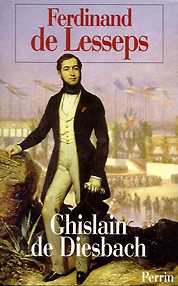History Prizes 1998
 FIRST EMPIRE PRIZE
FIRST EMPIRE PRIZE
Bernard CHEVALLIER, L’art de vivre au temps de Joséphine, Paris, Flammarion
Using the fascinating character of Josephine, this book illustrates the ‘art de vivre’ of the French in the period from the Consulat to the Empire, a rhythm of life which was made up of many activities during the day. Starting with the ‘toilette’ and passing through the various morning activities (shopping, personal correspondence and dinner at 11 o’clock), going on to the gentile promenades in the gardens and cultivated pastimes of the afternoons (music lessons, reading of romantic books, watercolour painting), finishing with the evenings spent ‘en famille’ or out with friends at balls or the opera. This book brings back to life all the details of daily life.
In the twenty year period between the fall of Robespierre and the beginning of the Restoration the wealthy classes saw significant changes in their lifestyles and great improvements in their personal comfort. One of the principal developments was that of interior decoration, where Neoclassical was the style of the day, along with a complete change in the forms of furniture, distinguished by an almost exclusive use of mahogany. Furniture builders like Biennais made charming items of furniture with multiple functions, but principally designed to be used for writing or for one’s toilet. Great advances were made in hygiene; baths, no longer the prerogative of royalty, were widely installed. Significant progress was also made in the field of interior lighting.
The symbol of a lifestyle refined to the highest degree, the figure of the Empress serves as a reference point for an entire period. The objects with which she surrounded herself, the quality of the life which she led, made her into a sort of emblem, and for a good number of her contemporaries, her life at Malmaison was still imbued with the graces and luxurious living of the Ancien Régime.
Bernard Chevallier, head curator of the Musée national de Malmaison et Bois Préau, is the author of an important monograph on Josephine, collaborated with Christophe Pincemaille for the edition of Josephine’s letters Impératrice Joséphine, Correspondance, 1782-1814 (Histoire Payot), and has written many exhibition catalogues on the Empire.
 SECOND EMPIRE PRIZE
SECOND EMPIRE PRIZE
Ghislain DE DIESBACH, Ferdinand de Lesseps, Paris, Perrin
A complete and well-documented biography of the man who, along with Victor Hugo, was the most famous Frenchman in the world of the end of the 19th century.
Ferdinand de Lesseps (1805-1894) had a notable diplomatic career in Egypt and Spain before coming up with the idea (in 1854) which was to make him famous the world over: the building of the Suez Canal.
The author describes with verve and humour de Lesseps’s fifteen-year-long struggle, against (amongst others) the British and Ottoman Empires, which he fought with tenacity, helped by the Egyptian Viceroys Mohammed Said Pasha and Ismail Pasha, and which led to the world-famous inauguration, in 1869, of the Suez Canal by the Empress Eugenie.
The glory and prestige which the Suez Canal brought to de Lesseps were such that when he turned his attention to the building of a Panama Canal, confidence in him was boundless and investors flocked to his side…
But Panama was not Suez. The project soon ran into trouble, and the scandal was so immense that not only journalists were compromised but so also were many members of the French parliament, and even some ministers (notably Clemenceau). The author gives a colourful account of this scandal, which alas brought others in its wake.
Ferdinand de Lesseps, then in his later years, never really understood the extent of the affair, and his reputation (after a brief eclipse) was left almost intact.
Ghislain de Diesbach was born in Le Havre 6 August, 1931. Educated at a Jesuit school in Le Mans and subsequently at the Lycée Thiers de Marseille, he studied law at the University of Aix-en-Provence.
Author of a novel, Un joli train de vie (Julliard, 1962), writer during the 60s for the reviews Revue de Paris, Nouvelles littéraires and Cahiers des saisons, he is best known for his series of biographies published by Editions Perrin: Necker (1978), Madame de Staël (1983, awarded the Goncourt bursary for biography), La Princesse Bibesco (1986), Proust (1991, Académie française biography prize), and Chateaubriand (1995).
Considered one of the best living biographers, Ghislain de Diesbach has written a lively and complete account of the life of Ferdinand de Lesseps.
